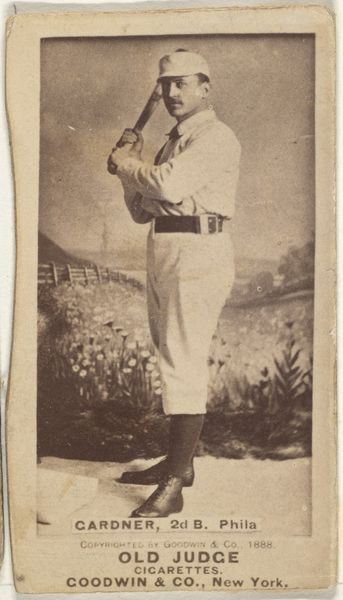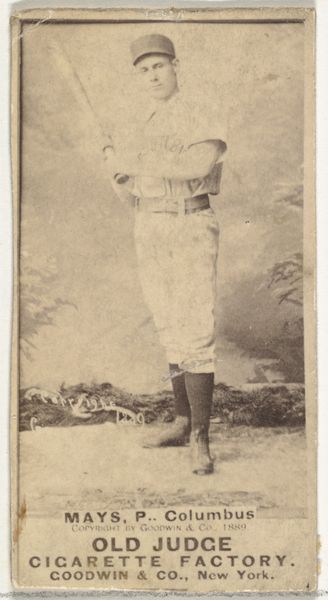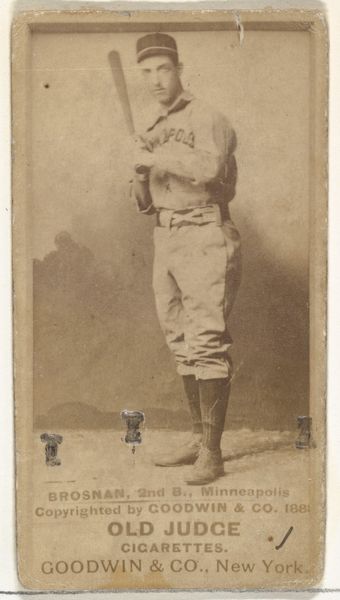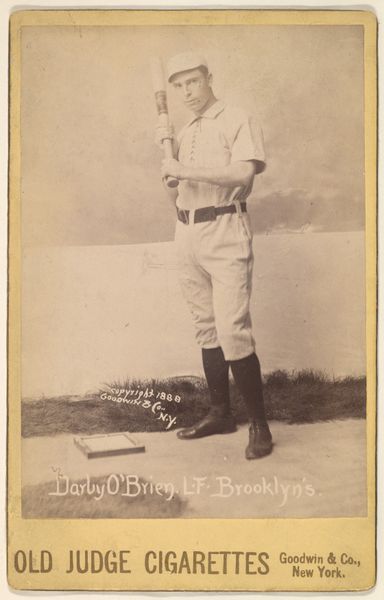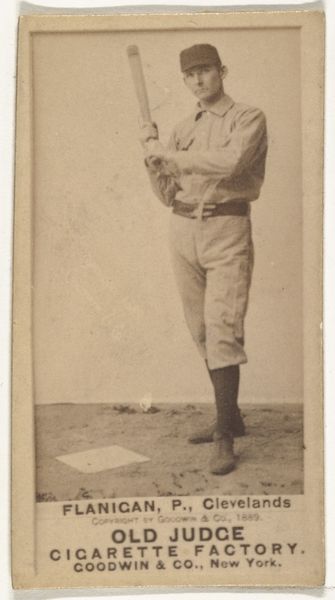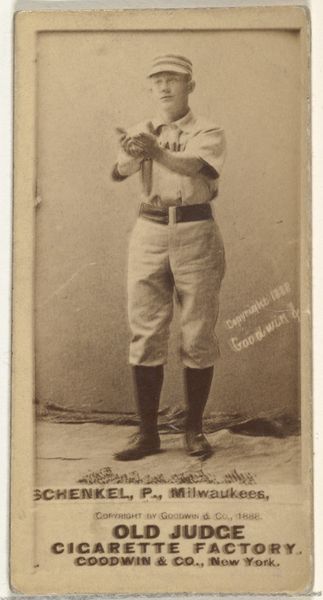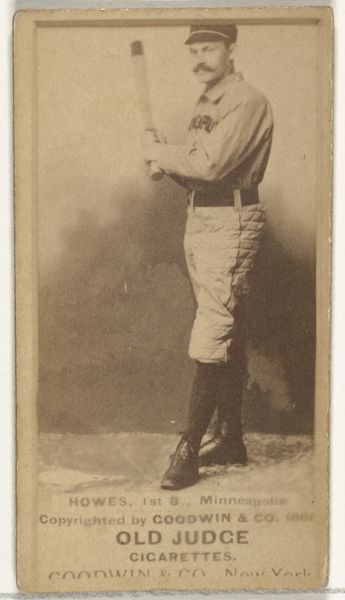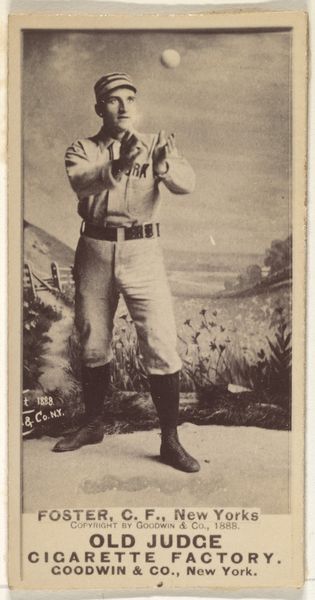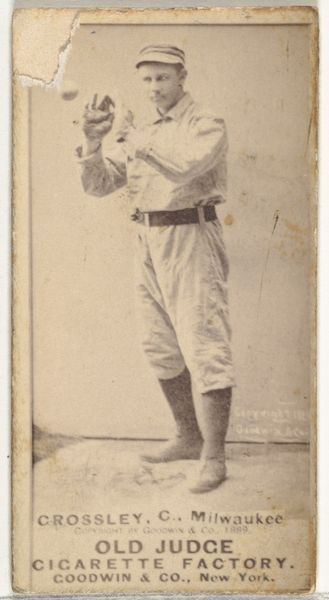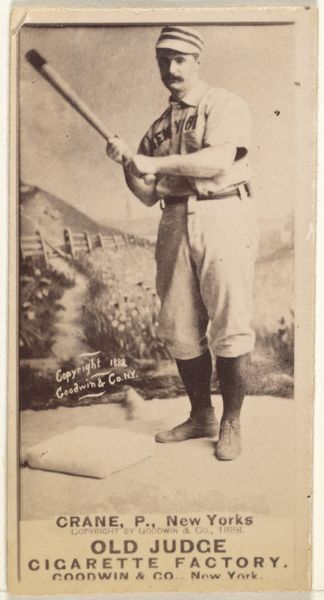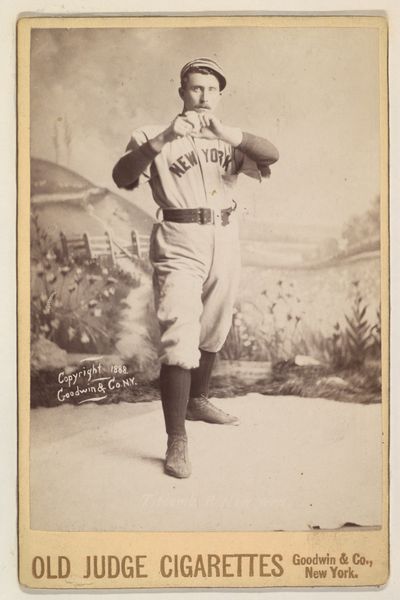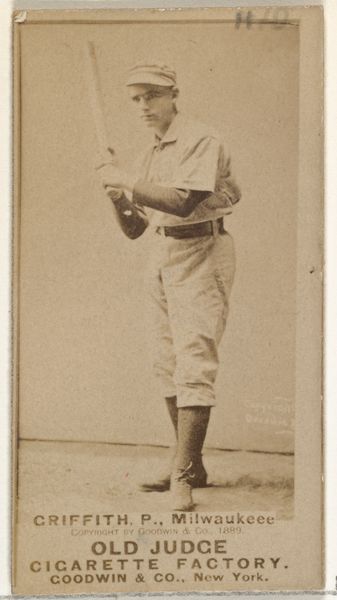
Slattery, Left Field, New York, from the series Old Judge Cigarettes 1888
0:00
0:00
drawing, print, photography, albumen-print
#
portrait
#
drawing
# print
#
impressionism
#
photography
#
historical photography
#
genre-painting
#
albumen-print
Dimensions: sheet: 6 1/2 x 4 3/8 in. (16.5 x 11.1 cm)
Copyright: Public Domain
Curator: This is a piece titled "Slattery, Left Field, New York," originating from the "Old Judge Cigarettes" series, created in 1888 by Goodwin & Company. It's an albumen print, now held at the Metropolitan Museum of Art. Editor: What a sepia dream! The baseball player looks so earnest, like he's about to release a prayer instead of a fastball. It's like looking at a memory, faded and soft around the edges. Curator: Precisely. Consider the function: it was produced as a promotional item. These cards, printed on albumen paper, were inserted into cigarette packs as a marketing strategy, a collectable offering an image of health and virility juxtaposed with a known carcinogen. Editor: That's deliciously dark, isn't it? So, beauty and commerce shaking hands in the grim business of addiction. I am stuck on his gloves and high laced shoes, all covered in dirt. He could be preparing the ground as easily as stepping up to the plate. Curator: Note also how this genre scene collapses photographic realism with staged studio backdrops. It offers a fascinating perspective into the evolving social contexts surrounding early professional baseball and its commodification. It is meant to be widely reproduced, traded, consumed, and eventually discarded. Editor: But now it hangs in the Met, rescued from oblivion. I love the oddness of it—that backdrop feels almost Impressionistic. It feels at odds with the staged shot of the player himself. It almost gives me a dreamy, melancholy mood. He's caught between the real and the ideal. Curator: Which, you might argue, reflects its historical moment. This form of popular media highlights a nascent era of baseball’s professionalization while simultaneously documenting 19th-century production and marketing mechanisms of modernity itself. Editor: Yes, so much of history bound up in a little sepia rectangle. It makes me wonder about Slattery himself, though, doesn’t it? What was his story? Did he ever imagine his face would end up on a museum wall, rescued from a pack of smokes? Curator: Exactly. The layers of production, from player to product to art object, complicate simple narratives of artistry or even sport, demonstrating complex social and material relationships. Editor: Absolutely. Makes you consider how we transform ephemera into treasures and imbue them with all this meaning. Curator: Indeed, it's quite compelling how mass-produced cultural objects can ultimately hold such depth when analyzed with an eye towards their own historical production processes.
Comments
No comments
Be the first to comment and join the conversation on the ultimate creative platform.
